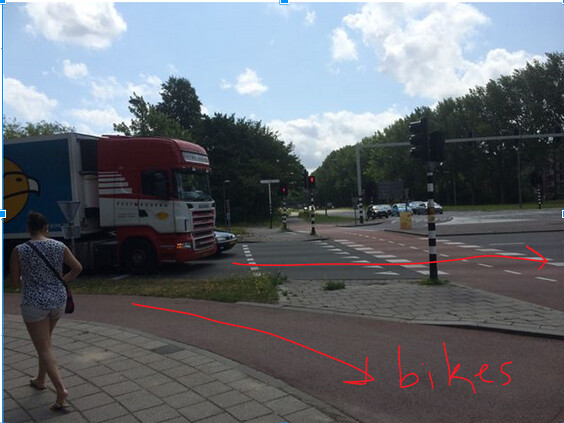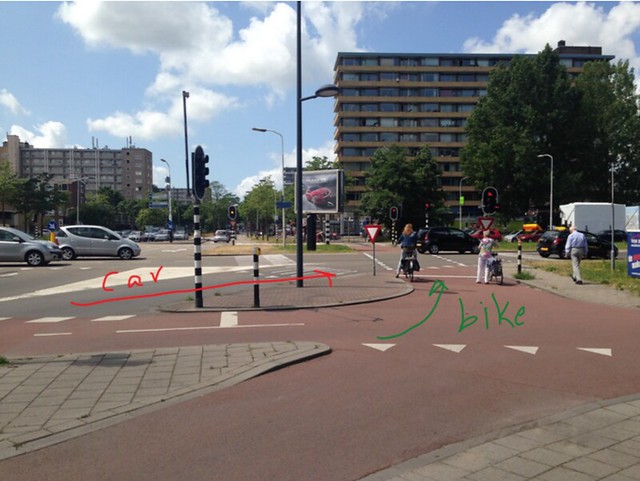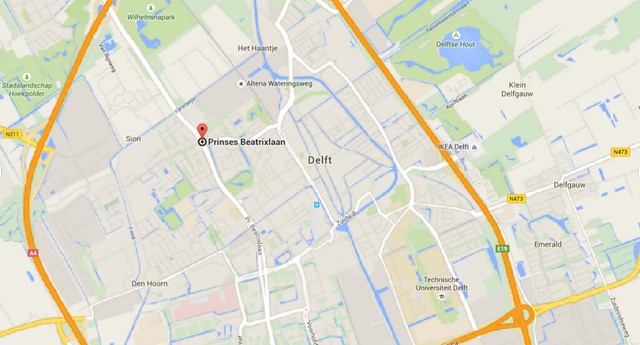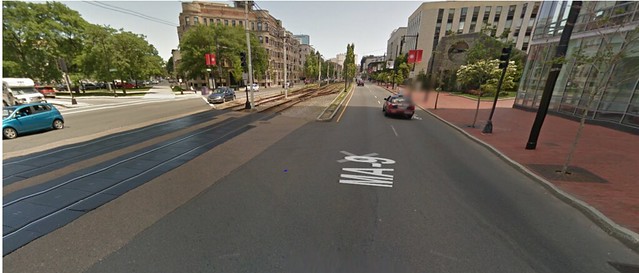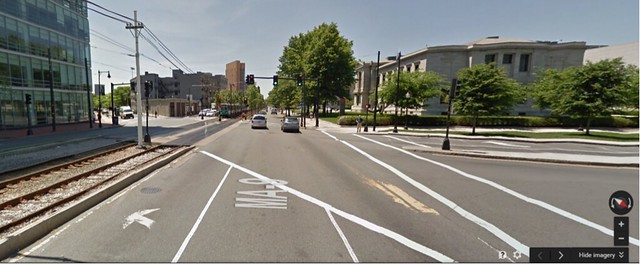The intersection of Ruys de Beerenbrouckstraat with Princes Beatrixlaan has many interesting features. There is the potential for bike and pedestrian crossing in all four directions. Bike lanes are outside the right hand turn lane; these are also known as pocket bike lanes. This is beneficial because cars do not have to cross the bike lane to get to the turn lane.
Another thing that eliminates the right hook conflict is the separate traffic signals for bikes, cars, and pedestrians. The signals are not pretimed; they are dependent on current traffic.
The potential right hook conflict is prevented because the cross signal for a bike will always be the opposite of the signal for the cars turning right into the road which they are crossing. This potential conflict is shown in the picture below. Therefore, right red arrows exist in the Netherlands. Bikes must make left turns in two stages, similar to pedestrians, but on different signals.
These streets have two way cycle paths on both sides. This makes it unlikely that a bike would need to make a left turn or cross the intersection more than once.
One area of Boston that could be redesigned using these concepts is the intersection of Huntington Ave. and Parker St./Hemenway St.
This intersection does not allow for pedestrian crossing at all points. If walking from Hemenway to Parker St., there is no crosswalk, stop line, or median across the left side of Huntington. An improvement would be to make this a protected intersection and add pedestrian signals at all points. No additional traffic signals are necessary.
All these streets have one way bike lanes on each side, therefore they could also be incorporated with their own signals. This is similar to the one in Delft shown previously.
